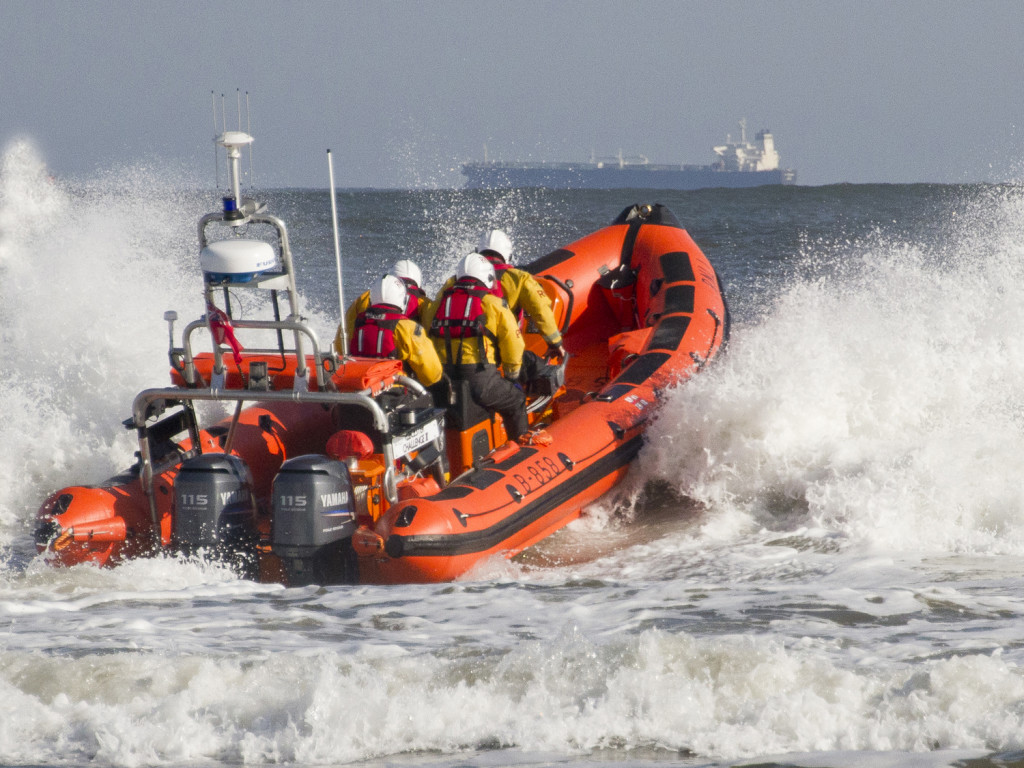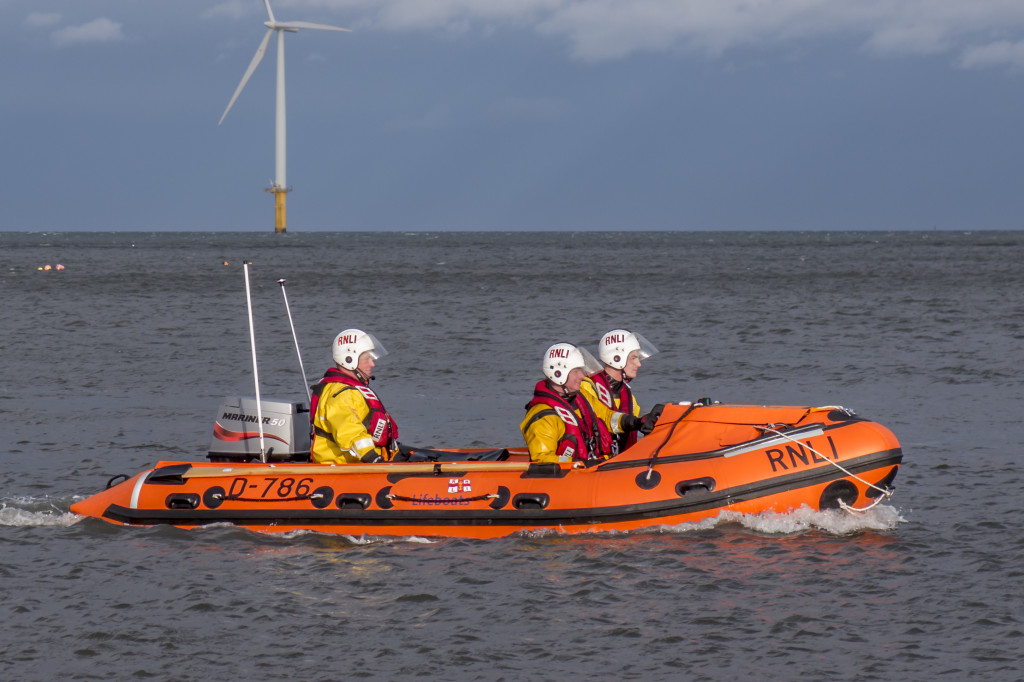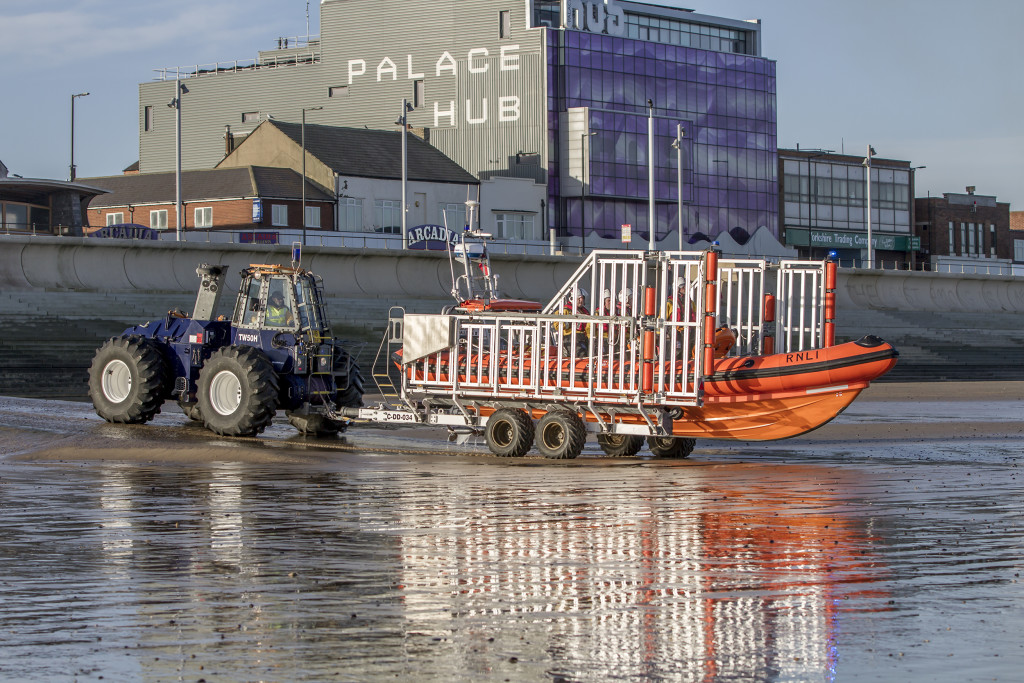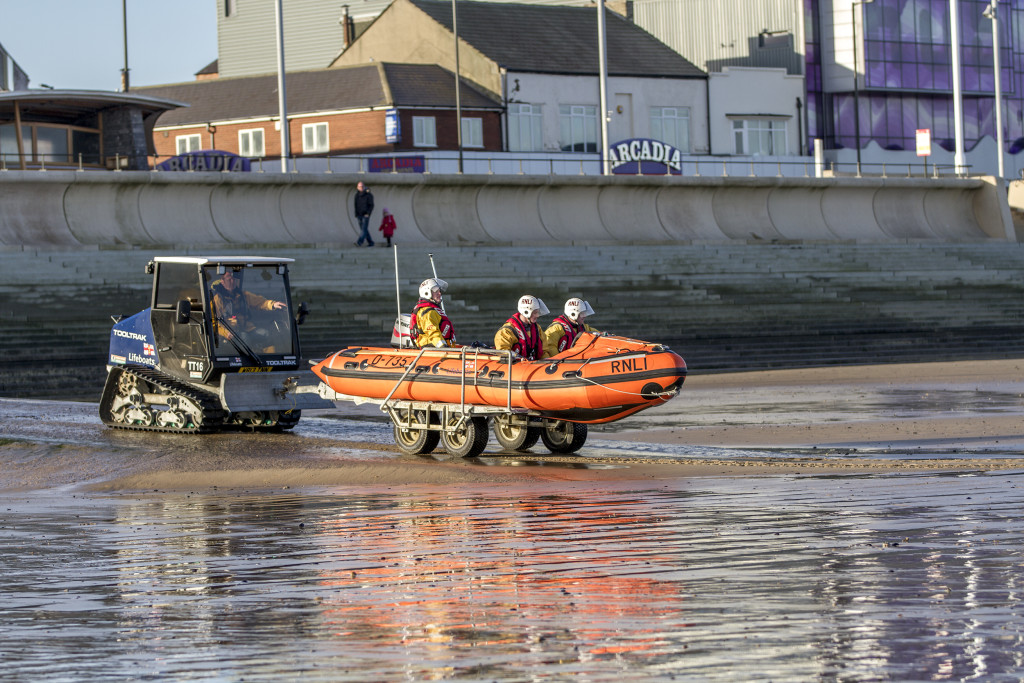The Lifeboats
The Atlantic 85 lifeboat stationed at Redcar since March 2012 is named Leicester Challenge 3. She was bought with funds raised by the people of Leicester and surrounding areas. The lifeboat carries the fleet number B-858.

Weighing 1.8 tonnes and with a length of 8.3 metres, Leicester Challenge 3 is powered by two 115hp outboard engines capable of delivering a top speed of 35 knots, making her the fastest lifeboat in the sea-going fleet.
She is equiped with radar, VHF/DF direction-finding equipment, and carries a crew of four.
The hull is constructed of glass reinforced plastic onto which are mounted inflatable sponsons for extra buoyancy. At the rear of the lifeboat is a frame which carries the self-righting bag - gas cylinders carried on the lifeboat are used to inflate this bag in the event of a capsize.
Redcar took delivery of its latest IB1 inshore lifeboat in September 2015. The lifeboat is named Eileen May Loach-Thomas, and bears the fleet number D-786. She was paid for from the legacy of the late Nicholas Thomas, and is named after his late wife.

The D class lifeboat, first introduced into the RNLI fleet in 1963, was designed to be launched quickly and easily, providing a rapid response to distress calls close to shore.
The design of the lifeboat has continuously evolved since it was introduced, and the latest version, the IB1, was introduced in August 2003, with improved manoeuvrability and equipment and the top speed has been increased from 20 knots to 25 knots and carries a crew of two or three.
It is a fully inflatable craft built of a polyester material coated with ‘hypalon’ which is impact and abrasion resistant. The hull is divided into seven compartments so that, should one become punctured, the lifeboat will remain serviceable. Equipment includes navigation and communication systems, night-vision equipment and a first aid kit including oxygen and stretcher.
Last but by no means least, lets take a look at the launching vehicles and shore crew. Because the Redcar lifeboat station is on an open stretch of the North East coast, launching the lifeboats is carried out using launching vehicles.
 The tractor used to launch the Atlantic 85 is a purpose-built unit weighing some 9.5 tonnes and is designed to drive deep into the sea to launch the lifeboat. To do this the engine compartment is sealed with hydraulically operated doors. The driver, on the other hand, is not so lucky! In deep water the cab door is designed to allow water to enter the cab, adding “ballast” to overcome the natural buoyancy of the unit. It is built by Clayton Engineering.
The tractor used to launch the Atlantic 85 is a purpose-built unit weighing some 9.5 tonnes and is designed to drive deep into the sea to launch the lifeboat. To do this the engine compartment is sealed with hydraulically operated doors. The driver, on the other hand, is not so lucky! In deep water the cab door is designed to allow water to enter the cab, adding “ballast” to overcome the natural buoyancy of the unit. It is built by Clayton Engineering.
 The IB1 is launched using a ToolTrak vehicle. This is a small track-driven vehicle built by Loglogic. It is fitted with towing attachments at the front and rear of the unit and has a front plough blade, useful for clearing the launching site of seaweed.
The IB1 is launched using a ToolTrak vehicle. This is a small track-driven vehicle built by Loglogic. It is fitted with towing attachments at the front and rear of the unit and has a front plough blade, useful for clearing the launching site of seaweed.
The launching and recovering of the lifeboat is carried out by the shore crew. These people work under the guidance of the Beach Master - the crewman in charge of all shore based activities. Like at other beach-launched stations this involves a range of duties, from making sure all the launching and recovery equipment is in top order to acting as “traffic controllers”, making sure that the tractor and carriage travel safely along the esplanade.